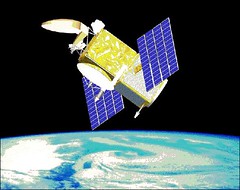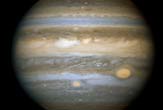Satellite Broadband Activity
Sunday, June 11th, 2006NRTC Welcomes New WildBlue Providers HERNDON, Va.
HERNDON, Va., June 9 /PRNewswire/ — Today, WildBlue Communications, Inc. announced agreements with satellite television providers DIRECTV, Inc. and EchoStar Communications Corporation (DISH Network) to distribute WildBlue satellite Internet access.
The National Rural Telecommunications Cooperative (NRTC) welcomes the efforts of these national providers to bring broadband Internet access to rural America.
"Beginning in 2002, NRTC and our members invested in WildBlue because we knew it would be a great service and would meet a critical need," said Bob Phillips, NRTC’s president and CEO, and member of the WildBlue Board of Directors. "NRTC members proved the benefit of the WildBlue business during its first year of operations. It is gratifying to see companies like EchoStar and DIRECTV recognize the value of such a great and needed product."
During much of the first year of WildBlue service availability, NRTC- member electric and telephone rural utilities have been the primary distributors of WildBlue satellite Internet service, bringing access to news, information and entertainment that was previously unavailable to many rural residents, and serve nearly 40,000 of the 60,000 current WildBlue subscribers.
"While WildBlue continues to expand our wholesale distribution network, we recognize the current and long term value of the NRTC membership in our distribution efforts," said Dave Leonard, WildBlue’s CEO. "NRTC has and will continue to play a vital role in the delivery of satellite broadband to rural America. WildBlue remains committed to the success of the NRTC member distribution effort."
"Our members are pioneers who have historically recognized the importance of bringing much-needed telecommunications solutions to rural America," continued Phillips. "They see a need and fill it early. Our members were instrumental in launching and distributing DIRECTV satellite television service, and for the last year they have filled an equally important role as the primary distributors of WildBlue. NRTC members are known and trusted service providers in their communities and will continue to fill this valued role by providing their core utility services as well as important diversified services such as WildBlue."
About NRTC
NRTC leads and supports more than 1,300 member organizations by delivering telecommunications solutions to strengthen member business, promote economic development, and improve the quality of life in rural America. The rural utilities that make up NRTC offer services to more than 30 million rural households in the United States. For more information, visit http://www.nrtc.coop.
National Rural Telecommunications CooperativeWeb site: http://www.nrtc.coop/


 The science objectives of Jason-2/OSTM are to extend the time series of ocean surface topography measurements to: a) obtain a continuous record of observations (with the previous missions), b) to determine the variability of ocean circulation at decadal time scales from combined data record with T/P and Jason, c) improve the measure of the time-averaged ocean circulation, d) improve the measure of global sea-level change, and e) improve open ocean tide models.
The science objectives of Jason-2/OSTM are to extend the time series of ocean surface topography measurements to: a) obtain a continuous record of observations (with the previous missions), b) to determine the variability of ocean circulation at decadal time scales from combined data record with T/P and Jason, c) improve the measure of the time-averaged ocean circulation, d) improve the measure of global sea-level change, and e) improve open ocean tide models. However, the storms’ outer bands are expected to pass close to one another and it’s anybody’s guess what will happen when they do.
However, the storms’ outer bands are expected to pass close to one another and it’s anybody’s guess what will happen when they do.
